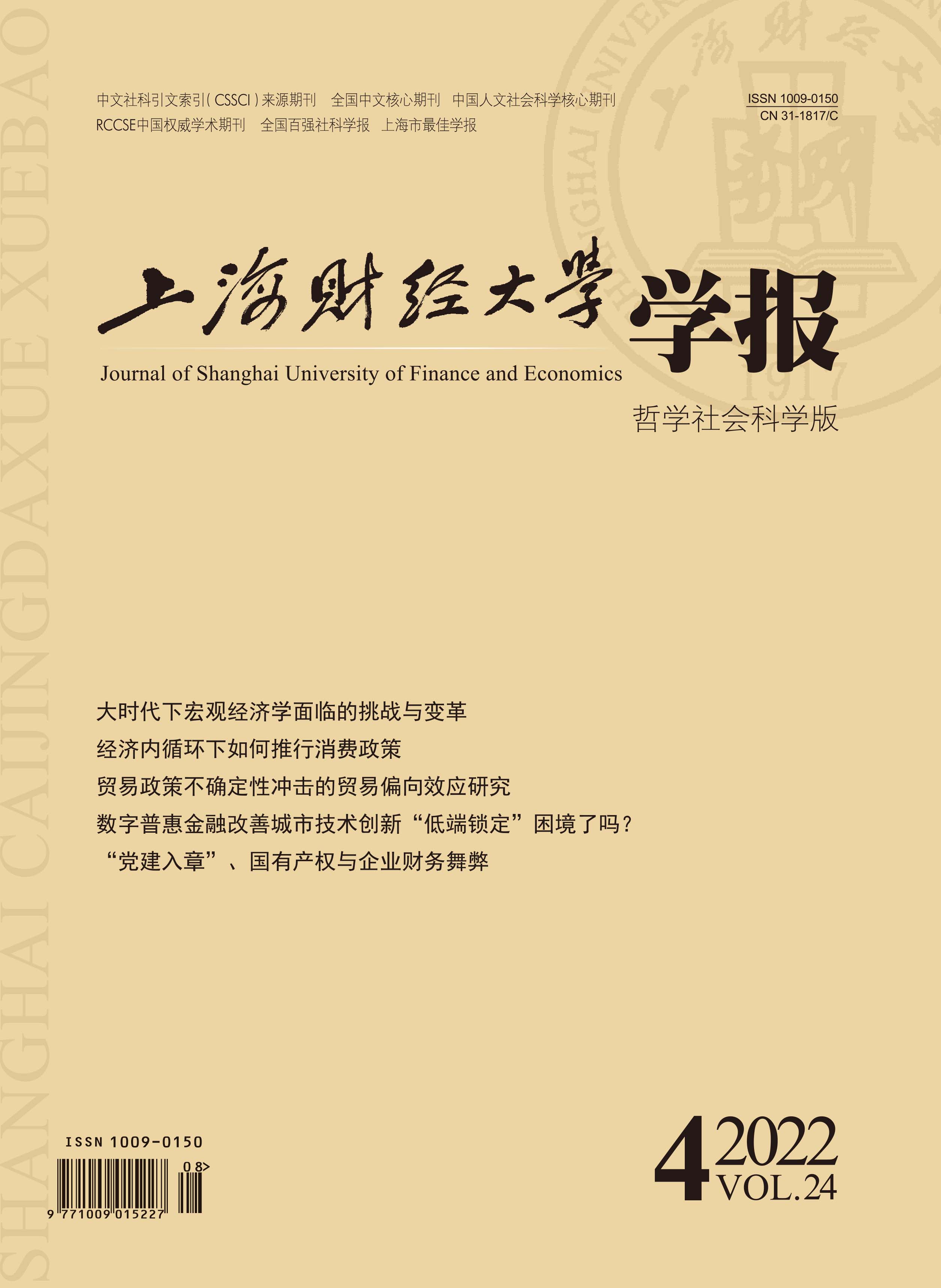聚焦中国品牌在海外市场的“竞争性”与“合法性”的二元悖论问题,文章探讨了中国品牌国际化战略与海外品牌绩效的关系及其边界条件。通过三个实验回答了中国品牌在国际化过程中究竟应该“求同”还是“存异”的问题。研究结果表明:(1)品牌同构促进海外品牌绩效的增长具有“顶点效应”,即随着品牌同构水平的增加,海外品牌绩效呈先上升后下降的趋势;(2)品牌异质促进海外品牌绩效的增长具有“谷点效应”,即随着品牌异质水平的增加,海外品牌绩效呈先下降后上升的趋势;(3)品牌同构/异质对海外品牌绩效的影响通过合法性感知的机制来完成,合法性感知是品牌同构/异质促进海外品牌绩效的关键阈值点;(4)认知距离与合法性感知具有交互作用,认知距离越大,合法性感知对海外品牌绩效的中介作用越强。文章理清了“品牌同构”和“品牌异质”的悖论关系以及二者对品牌海外绩效的作用节点与边界条件,为中国企业的品牌国际化战略提供了理论指导和实践启发。
品牌国际化战略与海外品牌绩效研究: “求同”还是“存异”
摘要
参考文献
2 陈立敏. 国际化战略与企业绩效关系的争议——国际研究评述[J]. 南开管理评论,2014,(5). DOI:10.3969/j.issn.1008-3448.2014.05.016
5 韩中和. 品牌国际化研究述评[J]. 外国经济与管理,2008,(12). DOI:10.3969/j.issn.1001-4950.2008.12.006
10 吴晓云, 李辉, 吴化民. 中国跨国企业的海外营销资产及其向绩效的转化[J]. 上海交通大学学报(哲学社会科学版),2015,(6). DOI:10.13806/j.cnki.issn1008-7095.2015.06.007
13 杨艳, 景奉杰. 象征资本、合法性感知与新创企业绩效关系研究述评[J]. 工业技术经济,2014,(10). DOI:10.3969/j.issn.1004-910X.2014.10.001
14 张婧, 邓卉. 品牌价值共创的关键维度及其对顾客认知与品牌绩效的影响: 产业服务情境的实证研究[J]. 南开管理评论,2013,(2). DOI:10.3969/j.issn.1008-3448.2013.02.011
15 张靖, 杜明飞. 模仿策略、感知相似性与品牌评价的关系研究[J]. 管理学报,2018,(4). DOI:10.3969/j.issn.1672-884x.2018.04.001
16 朱滢. 实验心理学[M]. 北京: 北京大学出版社, 2016.
17 Beugelsdijk S, Kostova T, Kunst V E, et al. Cultural distance and firm internationalization: A meta-analytical review and theoretical implications[J]. Journal of Management,2018,44(1):89–130. DOI:10.1177/0149206317729027
18 Bialdyga D, Britzelmaier B. Perceived brand parity-an anathema in marketing?[J]. International Journal of Management Cases,2011,13(3):168–180. DOI:10.5848/APBJ.2011.00050
19 Cennamo C, Santalo J. Platform competition: Strategic trade-offs in platform markets[J]. Strategic Management Journal,2013,34(11):1331–1350. DOI:10.1002/smj.2066
20 Cobb A J, Wry T, Zhao E Y. Funding financial inclusion: Institutional logics and the contextual contingency of funding for microfinance organizations[J]. Academy of Management Journal,2016,59(6):2103–2131. DOI:10.5465/amj.2015.0715
22 DiMaggio P J, Powell W W. The iron cage revisited: Institutional isomorphism and collective rationality in organizational fields[J]. American Sociological Review,1983,48(2):147–160. DOI:10.2307/2095101
23 Guo H, Tang J T, Su Z F. To be different, or to be the same? The interactive effect of organizational regulatory legitimacy and entrepreneurial orientation on new venture performance[J]. Asia Pacific Journal of Management,2014,31(3):665–685. DOI:10.1007/s10490-013-9361-9
24 Haans R F J. What's the value of being different when everyone is? The effects of distinctiveness on performance in homogeneous versus heterogeneous categories[J]. Strategic Management Journal,2019,40(1):3–27. DOI:10.1002/smj.2978
25 Han J K, Kim N, Srivastava R K. Market orientation and organizational performance: Is innovation a missing link?[J]. Journal of Marketing,1998,62(4):30–45. DOI:10.1177/002224299806200403
26 Hayes, A. F. Introduction to mediation, moderation, and conditional process analysis: A regression-based approach[M]. New York: Guilford Press, 2013.
27 McNamara G, Deephouse D L, Luce R A. Competitive positioning within and across a strategic group structure: The performance of core, secondary, and solitary firms[J]. Strategic Management Journal,2003,24(2):161–181. DOI:10.1002/smj.289
28 Miller D, Amore M D, Le Breton-Miller I, et al. Strategic distinctiveness in family firms: Firm institutional heterogeneity and configurational multidimensionality[J]. Journal of Family Business Strategy,2018,9(1):16–26. DOI:10.1016/j.jfbs.2018.01.004
29 Narver J C, Slater S F. The effect of a market orientation on business profitability[J]. Journal of Marketing,1990,54(4):20–35. DOI:10.1177/002224299005400403
30 Nooteboom B, Van Haverbeke G, Duysters V, et al. Optimal cognitive distance and absorptive capacity[J]. Research Policy,2007,36(7):1016–1034. DOI:10.1016/j.respol.2007.04.003
31 Porac J F, Thomas H, Wilson F, et al. Rivalry and the industry model of Scottish knitwear producers[J]. Administrative Science Quarterly,1995,40(2):203–227. DOI:10.2307/2393636
32 Porter M E. Towards a dynamic theory of strategy[J]. Strategic Management Journal,1991,12(S2):95–117. DOI:10.1002/smj.4250121008
33 Preacher, K. J, D D. Rucker, and A. F. Hayes. Addressing moderated mediation hypotheses: Theory, methods, and prescriptions[J]. Multivariate Behavioral Research,2007,42(1):185–227. DOI:10.1080/00273170701341316
34 Rahman M. Differentiated brand experience in brand parity through branded branding strategy[J]. Journal of Strategic Marketing,2014,22(7):603–615. DOI:10.1080/0965254X.2014.914061
35 Suchman M C. Managing legitimacy: Strategic and institutional approaches[J]. The Academy of Management Review,1995,20(3):571–610. DOI:10.2307/258788
36 Tan J, Shao Y F, Li W. To be different, or to be the same? An exploratory study of isomorphism in the cluster[J]. Journal of Business Venturing,2013,28(1):83–97. DOI:10.1016/j.jbusvent.2012.02.003
37 Whitelock J, Fastoso F. Understanding international branding: Defining the domain and reviewing the literature[J]. International Marketing Review,2007,24(3):252–270. DOI:10.1108/02651330710755285
39 Yang Y, Driffield N. Multinationality-performance relationship[J]. Management International Review,2012,52(1):23–47. DOI:10.1007/s11575-011-0095-y
40 Zaheer S, Schomaker M S, Nachum L. Distance without direction: Restoring credibility to a much-loved construct[J]. Journal of International Business Studies,2012,43(1):18–27. DOI:10.1057/jibs.2011.43
41 Zhao E Y, Fisher G, Lounsbury M, et al. Optimal distinctiveness: Broadening the interface between institutional theory and strategic management[J]. Strategic Management Journal,2017,38(1):93–113. DOI:10.1002/smj.2589
42 Zhao X S, Lynch Jr J G, Chen Q M. Reconsidering baron and Kenny: Myths and truths about mediation analysis[J]. Journal of Consumer Research,2010,37(2):197–206. DOI:10.1086/651257
引用本文
谢佩洪, 陈昌东. 品牌国际化战略与海外品牌绩效研究: “求同”还是“存异”[J]. 上海财经大学学报, 2022, 24(4): 47-61.
导出参考文献,格式为:





 6067
6067  7216
7216

